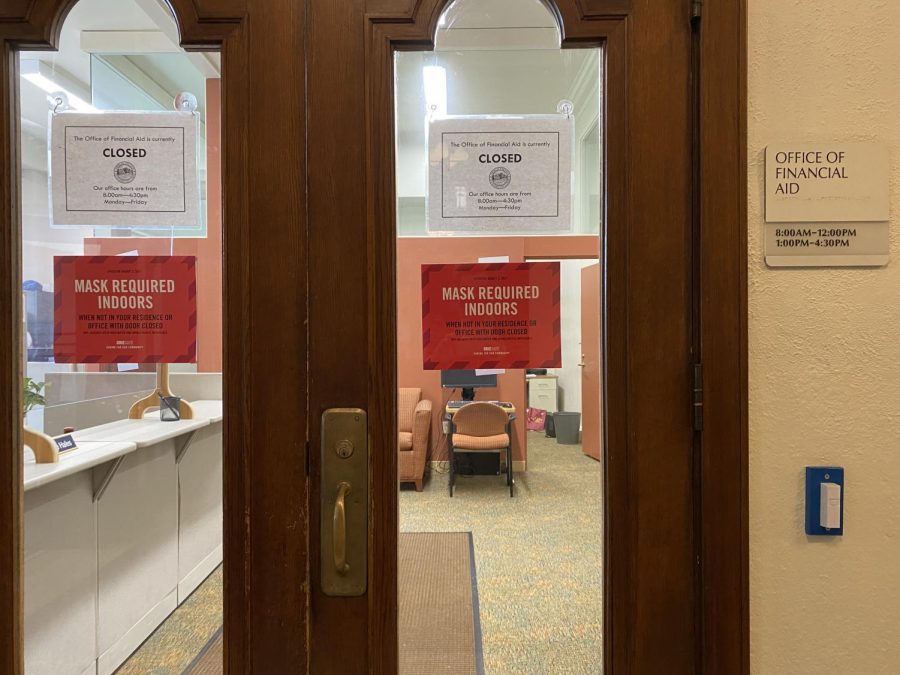College to Distribute Federal Funds to Students in Need, 75% of Campus to Receive Funds
Today the Oberlin Office of Financial Aid will begin distributing block grants to students after the College received nearly $4 million from the federal government under the American Rescue Plan Act of 2021. In total, roughly 2,700 current and recently graduated students — or around 75 percent of the student body — will receive grants between today and October. Other funds from the allocation will be used to purchase personal protective equipment and maintain favorable health conditions on campus.
The College has previously distributed money from COVID-19 stimulus packages passed by the federal government, but in previous rounds of funding, students had to fill out an application for the grant. For this round, all students who applied for financial aid in the 2020–21 academic year with an Estimated Family Contribution under $75,000 will receive funds without needing to apply for the grant.
Students who don’t fill out the Free Application for Federal Student Aid but still established need through the CSS Profile — such as international students and undocumented students — can still be eligible for the grant.
Students with an EFC between $0 through $20,000 can expect to receive the full $1,500. Students will receive $900 if they have an EFC between $20,000 and $50,000, and all other individuals with an EFC below $75,000 will receive $600.
“It certainly was welcome assistance for our students because we have a lot of students that reached out to our office and indicated they had a change in circumstance because of a parent or both parents’ employment being impacted by COVID-19 or the student’s own ability to work being impacted by COVID-19,” Director of Financial Aid Michele R. Kosboth said. “The College itself certainly doesn’t have the resources to respond to all of those with our own funding, so the availability of these funds allowed the College to really help students in a time of extreme need.”
According to Kosboth, Grants will be distributed in three waves starting with roughly 1,000 students currently enrolled on campus. In September, an additional 1,000 students who were enrolled during the 2020–2021 academic year, including recent graduates from the class of 2021, will receive funds. The third and final wave will go out to about 700 first-year and transfer students in October.
The funding will be beneficial for students who lost income during the pandemic or who might have needed to make purchases of laptops and other technology to participate in remote schooling.
“Even if the pandemic is winding down… it is still very much a concern outside [of Oberlin] and it was such a long time of people not being able to do the things the way they had been planned that it definitely messed with the financial situations of multiple people,” College third-year Jordan Friday said. “So it’s always good to support people.”
According to the U.S. Department of Education, at least half of the Higher Education Emergency Relief Fund III that a school receives must be used as direct emergency aid for students. The other half can be used by the institution in order to address COVID-19.
“A portion of [the institutional] funds must be used to: (a) implement evidence-based practices to monitor and suppress coronavirus in accordance with public health guidelines; and (b) conduct direct outreach to financial aid applicants about the opportunity to receive a financial aid adjustment due to the recent unemployment of a family member or independent student, or other circumstances,” read the Department of Education FAQ sheet on HEERF III funds.
The College had met these requirements by using government aid to implement the three-semester system and make other changes to support learning during the pandemic according to Vice President for Finance and Administration Rebecca Vazquez-Skillings. To date, Oberlin has received $6.3 million from the federal government since fiscal year 2020. $1,912,097 of that was awarded at the end of July as part of the most recent government allocation.
“These funds supported the technology used for the transition to an online platform and public health support and administration, including facilities system enhancements, personal protective equipment (for example, masks, sanitation stations, plexiglass), and enhanced cleaning services,” Vazquez-Skillings wrote in an email to the Review. “These funds were an important source of support for the College’s strategy to de-densify classrooms and student housing.”
The money comes at a critical time for both the College and students alike, as the Delta variant is currently pushing parts of the U.S into another phase of the pandemic and potentially causing more economic hardship for students. However, the extra help is likely to only come once and Kosboth hopes that students will be cognizant of this as funds arrive in their bank accounts.
“The concern I have is that the money is not unlimited — the COVID-[19] funds will run out and we will need students to recognize that the ability to get access to this kind of funding will stop at some point,” Kosboth said. “I think it’s great that the students have had access to this funding. I’m just cautious that students will think that this funding will continue to exist after it’s all gone.”





